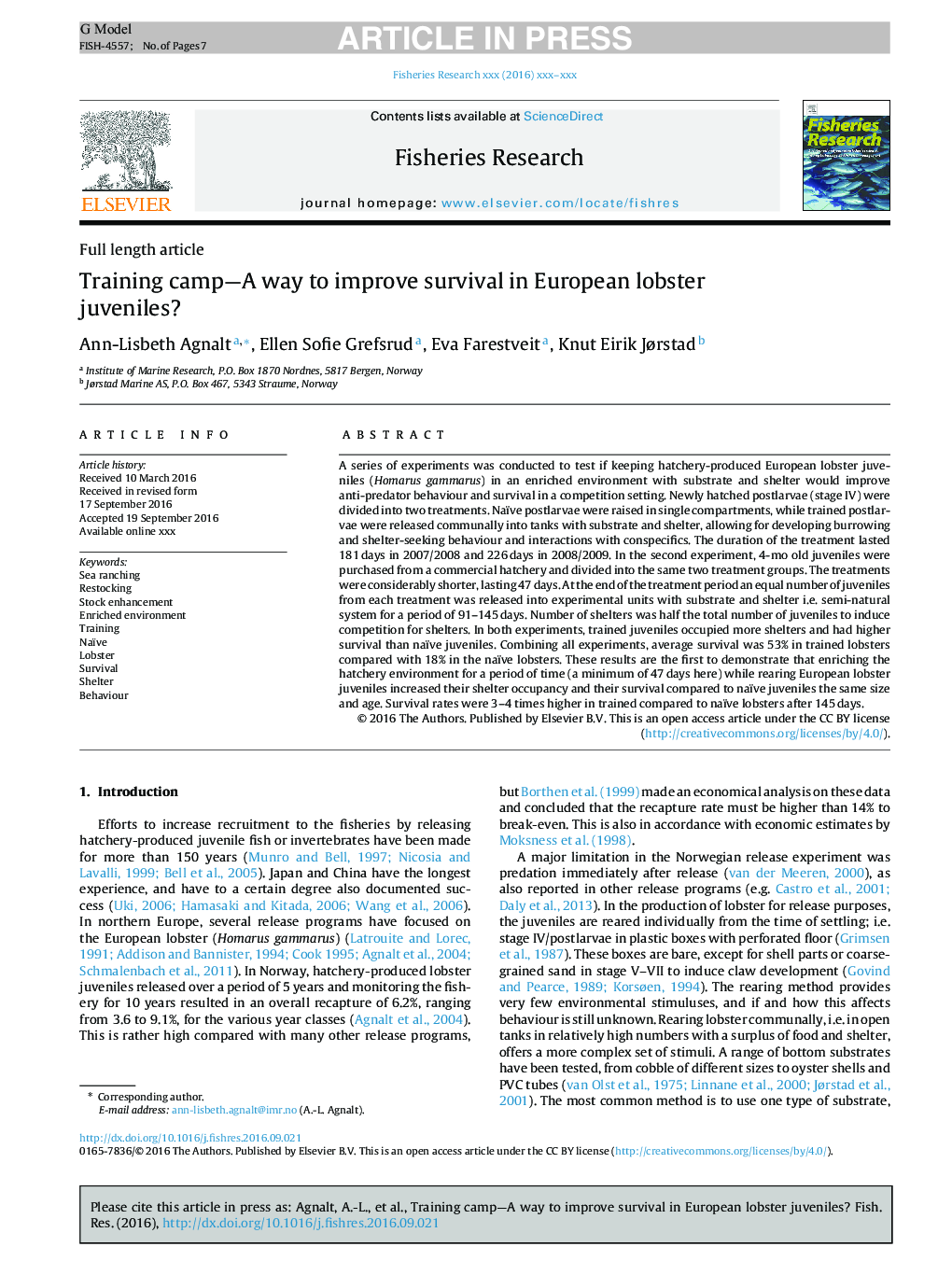| کد مقاله | کد نشریه | سال انتشار | مقاله انگلیسی | نسخه تمام متن |
|---|---|---|---|---|
| 5765573 | 1413078 | 2017 | 7 صفحه PDF | دانلود رایگان |
عنوان انگلیسی مقاله ISI
Training camp-A way to improve survival in European lobster juveniles?
ترجمه فارسی عنوان
اردوگاه آموزشی - راهی برای بهبود بقا در نوجوانان اهل اروپا؟
دانلود مقاله + سفارش ترجمه
دانلود مقاله ISI انگلیسی
رایگان برای ایرانیان
کلمات کلیدی
موضوعات مرتبط
علوم زیستی و بیوفناوری
علوم کشاورزی و بیولوژیک
علوم آبزیان
چکیده انگلیسی
A series of experiments was conducted to test if keeping hatchery-produced European lobster juveniles (Homarus gammarus) in an enriched environment with substrate and shelter would improve anti-predator behaviour and survival in a competition setting. Newly hatched postlarvae (stage IV) were divided into two treatments. Naïve postlarvae were raised in single compartments, while trained postlarvae were released communally into tanks with substrate and shelter, allowing for developing burrowing and shelter-seeking behaviour and interactions with conspecifics. The duration of the treatment lasted 181Â days in 2007/2008 and 226Â days in 2008/2009. In the second experiment, 4-mo old juveniles were purchased from a commercial hatchery and divided into the same two treatment groups. The treatments were considerably shorter, lasting 47Â days. At the end of the treatment period an equal number of juveniles from each treatment was released into experimental units with substrate and shelter i.e. semi-natural system for a period of 91-145Â days. Number of shelters was half the total number of juveniles to induce competition for shelters. In both experiments, trained juveniles occupied more shelters and had higher survival than naïve juveniles. Combining all experiments, average survival was 53% in trained lobsters compared with 18% in the naïve lobsters. These results are the first to demonstrate that enriching the hatchery environment for a period of time (a minimum of 47Â days here) while rearing European lobster juveniles increased their shelter occupancy and their survival compared to naïve juveniles the same size and age. Survival rates were 3-4 times higher in trained compared to naïve lobsters after 145Â days.
ناشر
Database: Elsevier - ScienceDirect (ساینس دایرکت)
Journal: Fisheries Research - Volume 186, Part 2, February 2017, Pages 531-537
Journal: Fisheries Research - Volume 186, Part 2, February 2017, Pages 531-537
نویسندگان
Ann-Lisbeth Agnalt, Ellen Sofie Grefsrud, Eva Farestveit, Knut Eirik Jørstad,
